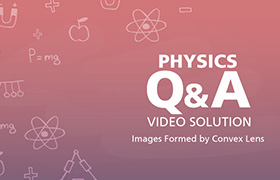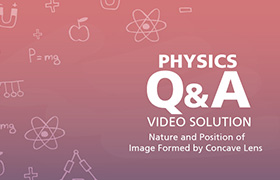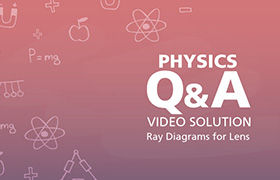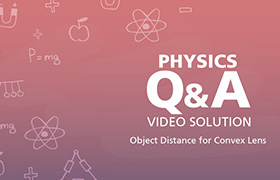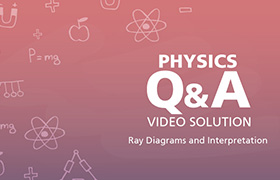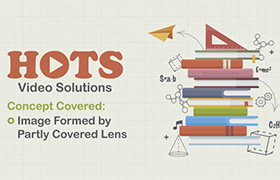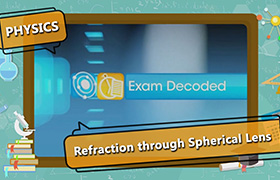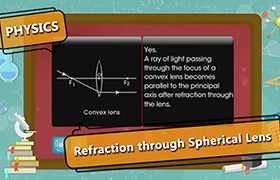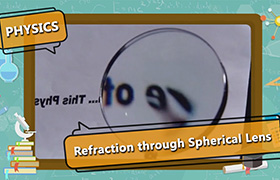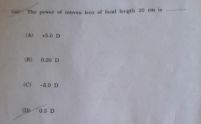CBSE Class 10 Answered
35. A student focuses the image of a candle flame, placed at about 2 m from a convex lens of focal length 10 cm, on a screen. After that he moves gradually the flame towards the lens and each time focuses its image on the screen.
(A) In which direction does he move the lens to focus the flame on the screen?
(B) What happens to the size of the image of the flame formed on the screen?
(C) What difference is seen in the intensity (brightness) of the image of the flame on the screen?
(D) What is seen on the screen when the flame is very close (at about 5 cm) to the lens?
Asked by cskdhoni7ipl | 21 Mar, 2021, 19:41: PM
Part (A)
Location of candle which is at a distance 2 m from lens to object is very much far away compare to 10 cm focal length of lens.
Hence initially lens-to-screen distance when image is formed on screen is near to focal length 10 cm.
When object is moving from far away to 2F point of lens, image will move from F-point to 2F-point
( F-point of lens is at a distance equal to focal length from lens . 2F-ponit is at a distance equal to twice of focal length from lens . ).
Hence lens-to-image distance will increase , when object is moved from far away to 2F point.
Hence, when candle is moved from 2 m distance towards lens, then lens should be moved away from
screen or towards object to from image .
-----------------------------------------------
Part (B)
Image size will increase , when candle is moved from 2m distance and lens is moved towards candle to form image.
Magnification of image m = v / u , where v is lens-to-image distance and u is lens-to-object distance.
When we move the candle from 2m distance, lens-to-object distance u decreases and lens-to-image distance v increases.
hence magnification increases and image size increases
-----------------------------------------------------
Part (C)
As the object-to-lens distance decreases , light collection angle or numerical aperture increases .
hence more light is collected and image intensity increases.
--------------------------------------------------------------
Part (D)
Real Image of candle that can be captured on screen is formed , only when the candle is beyond focal point of lens .
If the candle crosses focal point , which is 10 cm from lens, real image will not be formed
Answered by Thiyagarajan K | 21 Mar, 2021, 20:42: PM
Application Videos
Concept Videos
CBSE 10 - Physics
Asked by varma.renu9481 | 17 Mar, 2023, 18:28: PM
CBSE 10 - Physics
Asked by bhu.joshi54 | 14 Jun, 2022, 21:21: PM
CBSE 10 - Physics
Asked by kuppusamybose46 | 06 Mar, 2022, 17:16: PM
CBSE 10 - Physics
Asked by asifmd2k9 | 06 Feb, 2022, 20:50: PM
CBSE 10 - Physics
Asked by Roopareddy9844 | 27 Nov, 2021, 18:20: PM
CBSE 10 - Physics
Asked by Trisha Gupta | 10 Oct, 2021, 15:27: PM
CBSE 10 - Physics
Asked by Jethanleapon | 03 Oct, 2021, 19:35: PM
CBSE 10 - Physics
Asked by pras.rangi | 26 Jul, 2021, 09:06: AM
CBSE 10 - Physics
Asked by cskdhoni7ipl | 21 Mar, 2021, 19:41: PM
CBSE 10 - Physics
Asked by abdibnzubair | 11 Dec, 2020, 18:48: PM

